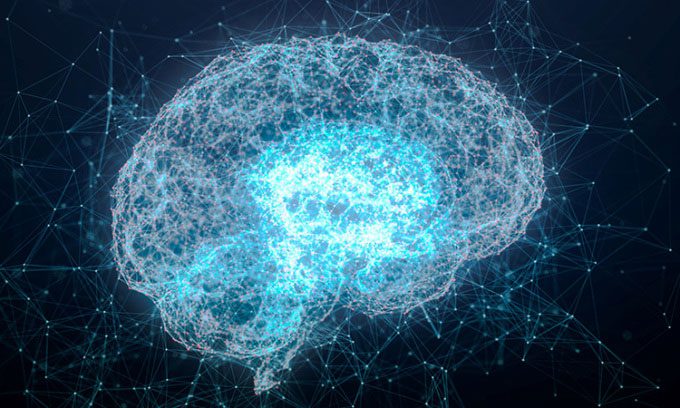The brain does not have pain receptors of its own, yet humans can still experience headaches due to the phenomenon of “referred pain.”
Headaches are a common condition that can occur in various forms, ranging from mild to severe, lasting from a few minutes to several days. When experiencing a headache, many people believe that the brain tissue itself is in pain, but this is not accurate.

Illustration of pain-sensing nerves sending messages to the brain. (Photo: Mr. Cole Photographer).
In fact, the brain perceives pain throughout the body, but it does not have pain receptors of its own. So why do people experience headaches?
Headaches can stem from underlying medical conditions, such as sinusitis, low blood sugar, or head trauma. However, generally speaking, most headaches arise due to the phenomenon of “referred pain,” which means that the pain is felt in a different location than where it actually occurs, according to Dr. Charles Clarke, a neurologist and headache specialist at Vanderbilt Health in the United States. This is similar to how a herniated disc in the back can cause sciatica, resulting in pain down the leg. In most cases of headaches, the actual issue is located elsewhere, such as in the jaw, shoulders, or neck, causing discomfort in the muscles and nerves surrounding the brain.
According to the World Health Organization (WHO), tension headaches are the most common type of recurrent headache. Clarke notes that tension headaches often occur due to pain in the muscles at the top of the head or forehead. The pain arises when the muscles in the face, neck, and scalp tighten, which can be associated with stress, according to the National Institutes of Health (NIH). However, headaches and muscle tightness may be secondary, originating from another stress response, such as shoulder tension or jaw clenching.
According to the NIH, the pain-sensing nerves in the muscles and blood vessels around the head, neck, and face can be activated by various processes, such as blood vessel dilation, stress, or muscle tension. These nerves then send signals to the brain, but the patient may feel the pain as if it is emanating from deep within the brain tissue.

Why do we get headaches? (Photo: Valentinrussanov)
Another type of headache, migraine, can be intense and last longer. This disorder often has a hereditary component and can cause other symptoms such as nausea. The root cause of migraines is not yet fully understood, but one hypothesis suggests that this pain is related to the trigeminal nerve (the nerve that senses pain in the head and face) and the dura mater (the protective layer of the brain where blood vessels dilate and constrict).
One possible explanation is that an electrical stimulus in the brain affects the trigeminal nerves and triggers an inflammatory response. This inflammatory response spreads through the dura mater blood vessels, and the trigeminal nerves send signals to the brainstem. Subsequently, the inflammation reaches the meninges, which are sensitive to pain—protective tissue surrounding the brain—causing the headache.
While the relationship between body pain and headaches has been clearly established, the mechanisms that trigger headaches remain incompletely understood, Clarke states. However, according to Clarke, individuals can still manage these issues effectively through lifestyle changes, such as practicing yoga, using over-the-counter medications like ibuprofen and aspirin, or using prescription medications for more severe headaches.





















































